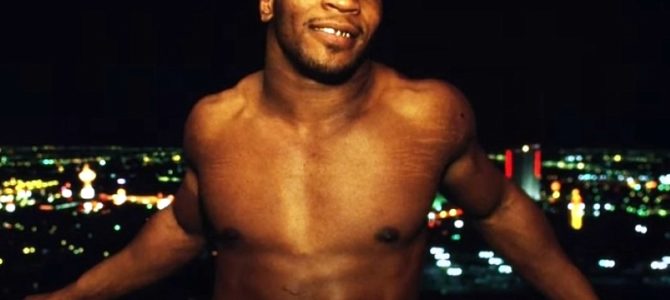
“The only person who could defeat him was him.” In one sense, the quote, included in the opening montage of the four-hour ABC documentary “Mike Tyson: The Knockout,” accurately describes the boxing champion. In the ring, few could match Tyson’s skills, or match him punch-for-punch.
But outside the ring, becoming one of the most well-known figures of the late 1980s and early 1990s ultimately led to Tyson’s downfall. Tyson bears responsibility for his own actions, of course, but “The Knockout” shines a spotlight that casts unpleasant reflections in many directions — at Tyson, some of his associates, and on a culture that often builds up celebrity “heroes” only to turn around, chew them up, and spit them out.
For a few years, Tyson became one of the most recognizable individuals on the planet. In the late 1980s and early 1990s, three Mikes — Tyson, Jackson, and Jordan — combined to dominate much of pop culture in the United States, and eventually around the world.
But in two of those three cases, the combination of tabloid headlines, constant attention from the paparazzi, and the pressures of fame and fortune took their toll. For Tyson, the dramatic rise and fall presaged the reality shows that began airing a decade after his short-lived reign as heavyweight champion.
The Importance of Discipline
“The Knockout” spends time detailing Tyson’s professional development as not just a strong fighter, but a disciplined boxer. Looking back at old footage of Tyson’s quick knockouts, some might focus only on the immense power that he brought into the ring.
But Tyson’s greatness did not just come from raw talent, or even from his strength. He spent hours and hours sculpting his physique, staying up late at night to train while in juvenile hall. But he also became a student of boxing, watching old movies while staying at trainer Cus D’Amato’s camp to analyze the techniques of former champions. He honed his craft, coupling his strength with quick feet to dodge the punches of his opponents while inflicting maximum power with his own.
A Dream Achieved, But Then…
Even as Tyson rose rapidly through the boxing ranks, the seeds of his eventual downfall appeared. In a little more than two years, his trainer D’Amato and his manager both died, losses that created a vacuum in his life Tyson struggled to replace.
“The Knockout” interviews a member of his camp who recalled the night that Tyson won his first heavyweight championship belt, in Las Vegas in November 1986. The individual returned from a nightclub at 4 a.m. to find Tyson loitering in the lobby of his casino. Tyson had finally achieved the pinnacle of success he and D’Amato had begun striving for years earlier, but the latter had died 12 months earlier, giving Tyson a lack of direction.
The Curse of Fame
Once he became champion, Tyson faced a whole cast of characters looking for a piece of the proverbial action. The endorsements and constant spotlight would take their toll on anyone, let alone an insecure 22-year-old handed fame and fortune he could not have imagined a decade earlier. Tyson associates recount the champion questioning their loyalties; for Tyson, as for many celebrities, the ulterior motives of others — including their lust for fame and fortune — compounds the sense of isolation.
The nadir of this case of fame gone awry might have come in Tyson’s September 1988 interview with ABC’s Barbara Walters. In that bizarre setting, Tyson sat calmly on a couch while his wife Robin Givens called living with him “torture,” and dubbed her husband “intimidating,” “scary,” and “frightening.”
No one came out looking good from that interview. Not Tyson, who later conceded that he had struck his wife during their marriage. Not Givens, who retaliated against the physical violence by inflicting emotional pain on her husband, humiliating him on national television. And not Walters and television viewers, who remained transfixed on this macabre drama that American celebrity culture had manufactured — reality television before such a genre formally existed.
Down and Out — Literally
The first half of “The Knockout” ends with a fitting denouement: Mike Tyson, the champion once thought unbeatable, searching around for his mouthpiece, having been knocked out by James “Buster” Douglas in February 1990. That fight, one of the biggest upsets in sports history, featured a role reversal. Douglas, long thought a “soft” fighter and a quitter, came in sharp as a tack, the recent death of his mother prompting him to win the heavyweight championship in her honor.
By contrast, years immersed in celebrity culture and personal drama meant Tyson lost the discipline that had made him such an effective fighter. His feet slow and plodding, Tyson could not evade the jabs and blows of the longer Douglas. The end result: A champion on the canvas of the Tokyo Dome, and — having not yet turned 24 — with his best days behind him.
Part one of “Mike Tyson: The Knockout” is now available on Hulu. Part two will air on ABC on June 1 at 8 p.m. Eastern.









